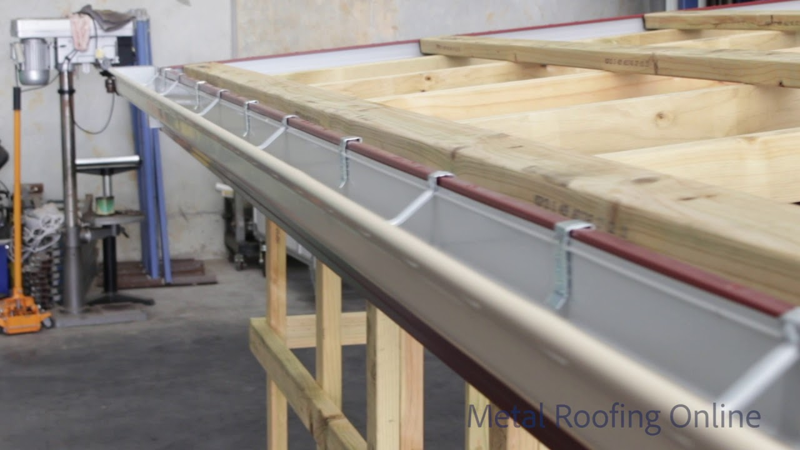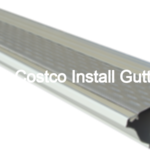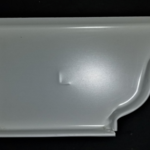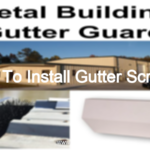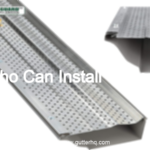- Begin by measuring the length of your carport. You will need to cut the gutters to fit this length, so be sure to allow for any necessary trimming.
- Once you have the gutters cut to size, it is time to install the brackets. Begin at one end of the carport, and use the drill to attach the brackets to the fascia board. Space the brackets out evenly, making sure that they are level.
- Once all of the brackets are in place, it is time to attach the gutters. Start at one end, and fit the gutter into the brackets. Use the gutter screws to secure the gutter in place.
- Continue attaching the gutters until you reach the other end of the carport. At this point, you will need to install the end caps.
What is the best way to attach gutters?
There are a few ways to attach gutters, but the best way is to use brackets. Brackets are easy to install and they keep the gutters securely in place. Plus, they allow the gutters to be easily removed for cleaning.
How do you install simple gutters?
- First, mark the location of the gutter on the fascia board. It is important to make sure that the gutter is level, so use a level to mark a level line on the fascia.
- Next, use a drill to create pilot holes along the level line. These pilot holes will be used to secure the gutter to the fascia.
- Finally, use screws to attach the gutter to the fascia. Make sure that the screws are driven into the pilot holes.
Can I install gutters myself?
Typically, installing gutters is a job best left to the professionals. That’s because there’s more to the process than just nailing some gutters to the edge of your roof. If you don’t install them properly, you could end up with gutters that leak, sag, or even come crashing down in a storm.
That said, if you’re handy and you’re up for a bit of a challenge, you can probably install gutters yourself. Just be prepared for a bit of a learning curve, and be sure to take your time to do the job right.
What holds gutters in place?
Gutters are held in place by a variety of means, depending on the type of gutter and the structure of the building. The most common type of gutter is the sectional gutter, which is composed of a series of interlocking sections. These sections are usually held together by brackets, screws, or rivets. The bracketed gutter is the most common type used in residential construction. It is composed of a series of sections that are held together by brackets that are attached to the fascia board. The screws or rivets that are used to attach the brackets are usually hidden by caps.
Are gutter screws better than nails?
Gutter screws are better than nails in a few ways. First, they are less likely to come loose over time. Second, they provide a more secure connection between the gutter and the fascia board. Third, they’re less likely to cause leaks. Fourth, they’re easier to remove if you need to make repairs. Finally, they just look better.
What are the best gutter options?
The best gutter options are those that are most effective at keeping your home free of water damage. There are a few different types of gutters to choose from, so it is important to select the one that will work best for your particular home.
One type of gutter is the traditional gutter, which is made of metal or plastic. These gutters are installed along the edge of your roof and collect rainwater as it falls. The water is then directed away from your home through a series of channels and downspouts.
Another type of gutter is the seamless gutter, which is made from a single piece of material, such as aluminum. Seamless gutters are less likely to leak than traditional gutters, and they provide a more finished look to your home’s exterior.
Finally, there are leaf guards, which are installed over your gutters to keep leaves and other debris from clogging them. Leaf guards are available in a variety of materials, including mesh and plastic.
When selecting the best gutter option for your home, it is important to consider the type of roof you have, the amount of rainfall in your area, and the appearance of your home. With a little research, you can find the perfect gutter system to protect your home from water damage.
What are the best screws for gutters?
There are a few different types of screws that can be used for gutters, but the best screws are usually either galvanized or stainless steel. These screws will resist rust and corrosion, which is important since gutters are constantly exposed to the elements. Additionally, these screws will also have a sharp point that can easily penetrate into the gutter material, making for a secure connection.
Last Word
Installing a gutter on a carport is a great way to protect your car from the elements. By following these simple steps, you can easily install a gutter on your carport in no time.
